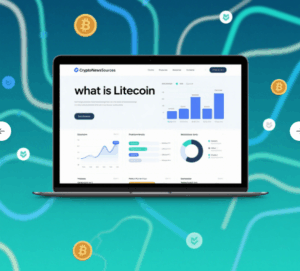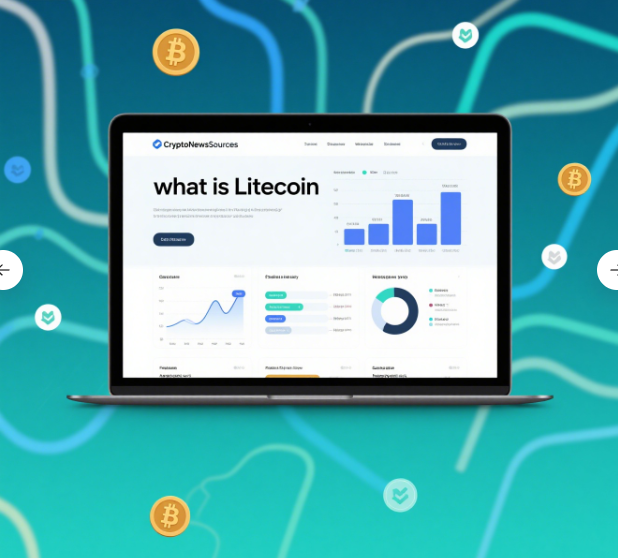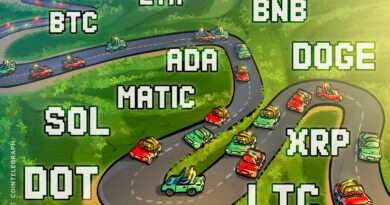What Is Litecoin? A Comprehensive Guide to the Silver to Bitcoin’s Gold
In the vast landscape of cryptocurrencies, Litecoin has long held a prominent position, often referred to as the “silver” to Bitcoin’s “gold.” But what exactly is Litecoin, and why does it matter in the digital asset space? Let’s dive into its origins, technology, and role in the crypto ecosystem, supported by insights from industry experts and reliable data.
The Genesis of Litecoin: Born from a Vision of Accessibility
Created in 2011 by Charlie Lee, a former Google engineer, Litecoin emerged as one of the earliest cryptocurrencies, built on the principles of Bitcoin’s blockchain but with key modifications. Lee aimed to create a digital currency that addressed some of Bitcoin’s limitations, focusing on faster transaction times and greater accessibility. As he explained in a 2013 interview with The Merkle, “Litecoin was designed to be a complementary currency to Bitcoin, offering a different set of advantages in terms of speed and scalability.”
Key Technical Differences from Bitcoin
Litecoin operates on a blockchain that is a fork of Bitcoin’s codebase but with several critical adjustments. One of the most notable is its shorter block generation time—2.5 minutes compared to Bitcoin’s 10 minutes. This results in faster transaction confirmations, a feature that has made it popular for everyday transactions. Additionally, Litecoin uses a different hashing algorithm, Scrypt, which was intended to make mining more accessible to individual users with standard hardware, as opposed to the specialized ASIC miners dominate Bitcoin mining. A 2019 report from Cambridge Centre for Alternative Finance highlighted that Litecoin’s mining ecosystem remains more decentralized than many other cryptocurrencies, with a significant portion of hash power coming from smaller-scale operations.
Litecoin’s Role in the Crypto Ecosystem
While Bitcoin is often seen as a store of value, Litecoin has positioned itself as a peer-to-peer digital payment system. Its faster block times and lower transaction fees make it suitable for microtransactions and everyday use. According to data from CoinMarketCap, as of June 2025, Litecoin ranks among the top 20 cryptocurrencies by market capitalization, with a valuation exceeding $10 billion. This stability and longevity have made it a favorite among both retail investors and institutions looking for a reliable altcoin.

The “Silver” Analogy: A Strategic Positioning
The comparison to silver is not just a catchy phrase; it reflects Litecoin’s strategic role in the market. Like silver in the precious metals industry, Litecoin is seen as a more practical, everyday asset, while Bitcoin serves as the digital gold. This positioning was intentional, as Lee and other proponents aimed to create a cryptocurrency that could coexist with Bitcoin rather than compete against it. As cryptocurrency analyst Michael Sonnenshein, CEO of Grayscale Investments, noted in a 2024 panel discussion, “Litecoin has carved out a unique niche by focusing on usability and accessibility, which are crucial for mainstream adoption of digital currencies.”
Investing in Litecoin: Risks and Rewards
For those considering Litecoin as an investment, it’s essential to weigh its advantages against the broader market risks. On the positive side, its long track record and established user base provide a level of stability not seen in many newer cryptocurrencies. The Litecoin network has also demonstrated resilience, with a 99.98% uptime record according to a 2025 report from Crypto uptime Institute. However, like all cryptocurrencies, Litecoin is subject to significant price volatility. Historical data from CoinGecko shows that while it has experienced periods of rapid growth, such as its 2017 bull run where it reached an all-time high of over $375, it has also faced sharp corrections, highlighting the need for careful risk management.
The Future of Litecoin: Scalability and Innovation
As the cryptocurrency space evolves, Litecoin continues to adapt. In recent years, it has explored technologies like the Lightning Network to enhance scalability and reduce transaction times further. The implementation of Segregated Witness (SegWit) in 2017 was a major milestone, improving the blockchain’s capacity and paving the way for more advanced features. These developments indicate Litecoin’s commitment to staying relevant in a rapidly changing landscape, the Lightning Network has the potential to make Litecoin transactions nearly instantaneous and incredibly cheap, a game – changer for global payments.
In conclusion, Litecoin is more than just an early Bitcoin fork; it’s a dynamic cryptocurrency with a clear purpose— to provide fast, affordable, and accessible digital payments. Its technical advantages, strategic positioning, and proven resilience make it a significant player in the crypto world. Whether you’re a seasoned investor or new to digital currencies, understanding Litecoin’s role can help you navigate the complex and exciting world of cryptocurrencies.




